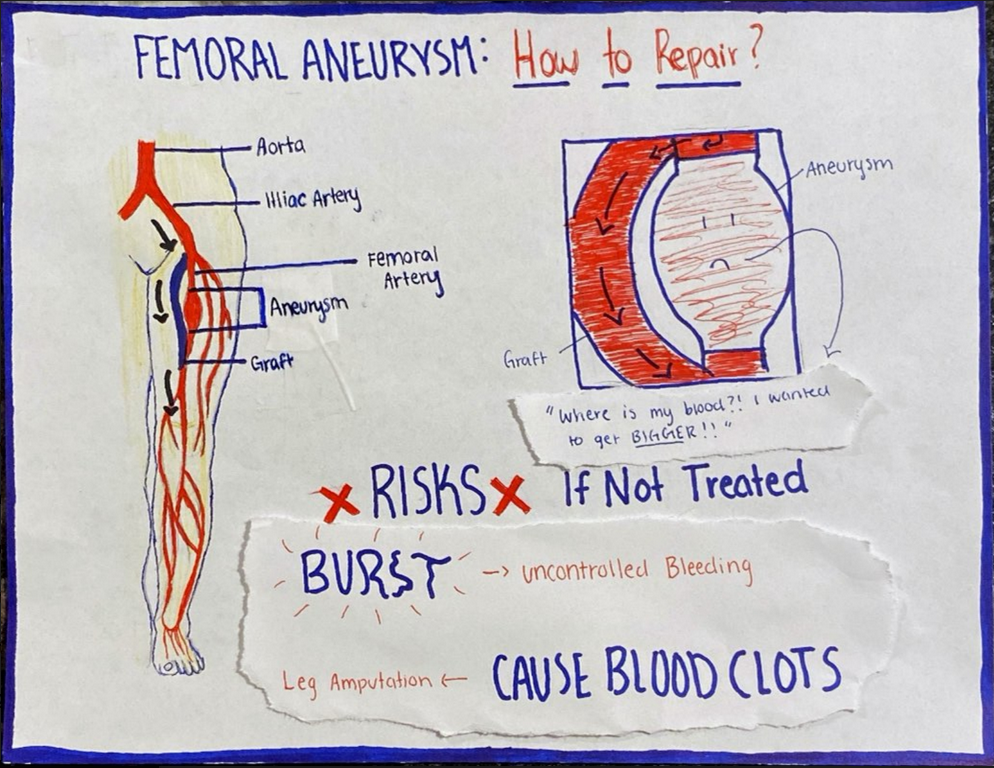An aneurysm occurs when a bulge begins to develop in areas of the aorta or peripheral arteries that are not as strong. This causes that area to expand under the extreme pressure of blood flowing. Complications such as edema, nerve pain, possible uncontrolled bleeding and amputation can occur if not treated. This sketch/poster (sorry I’m not artistically talented… this is my fourth draft of it) I created summarizes this by illustrating one particular surgical treatment (open surgical repair) to get the blood flowing efficiently to that extremity again.


Taylor is basically stating if the aneurysms get big enough they can rupture and cause more damage then when the first started. The aneurysm can be serious when in the leg because they can through blood clots and other debris to break off from the aneurysm and cause more damage to the foot. They normally do a bypass surgery to fix the aneurysm, it is more of a simple procedure but they do sometimes take a stent graft. The reason why aneurysms are thought to occur are because high blood pressure, deep or infected wounds can also be a reason. Basically anything that makes the artery walls weaken. Most aneurysms occur in the aorta, your body’s largest artery. The aorta carries blood away from your heart to the rest of your body. The part of your aorta located in your chest is called the thoracic aorta, and when your aorta reaches your abdomen, it is called the abdominal aorta. If you have a peripheral aneurysm in one leg, you are more likely to have an aneurysm in the other leg. You also have a greater chance of having an aortic aneurysm. Peripheral aneurysms may be caused by infection or injury in unusual circumstances, but the actual cause of most peripheral aneurysms is not known with certainty. First your physician will usually ask questions about your general health, medical history, and symptoms. In addition, your physician conducts a physical examination. Together these events are known as a patient history and exam. As part of your history and exam, your physician may check for an aneurysm in your groin or thigh.